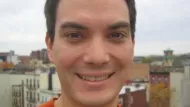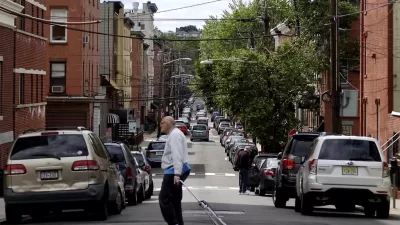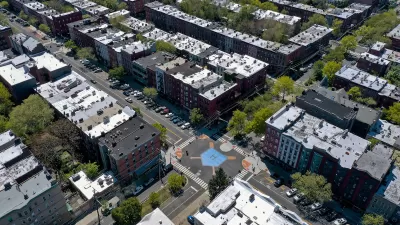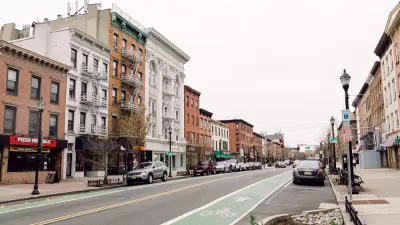As young planners bursting into the real world we are anxious to create communities that are vibrant, fun, and speak to the urbanity that will host future generations of our civilization. What we lack in experience we make up for in enthusiasm, and hope that our superiors guide us on the finer points of less crystallized aspects of critical infrastructure such as designing for the elderly, disabled, and those semi-attached to a stroller. In traffic engineering, we often hear a common rebuttal to technical traffic analysis from communities; they say, “I drive these streets every day, so I understand traffic here better than you.” Well, they’re right.
- Driving everywhere sucks. While there's something to be said for the sterile shuttling of babies to and fro via a car, getting past the psychological hurdle of daily life sans auto clears the way for an incredibly enjoyable father-child interaction that simply cannot be attained between front and rear seat. City streets provide tons of entertaining sights, people, and words to repeat (repeatedly), like building, people, plane, bus, truck, bicycle, baby, etc, and no DVD player is required! Also, it's amazing that I think this way nowadays, but not having to drive to the food store, the pharmacy, doctor's office, restaurants and other errands makes me feel like I am minimizing my son's risk with one of the greatest killers in America, car accidents.
- Playtime is an even split between toys at home and the local park playground. The debate about putting our son in day care versus a nanny (that translates to social stimulation versus personal interaction for non-parents) is dramatically skewed by the fact that our community playground is a two block walk away and puts our son amongst all kinds of kids and all ages. He meets new kids all the time and recognizes friends (or at least we do). Anhana from India and Finn from Germany are testaments to the diverse cultural exposure urban kids have, which I feel is really important to fostering a sense of equality for children. Sure you may find this in a day care, but the bustling urban playground is free!*
- Transit is still not so stroller friendly. While it is certainly possible to get around on transit with a stroller, there are often impediments and delays that make it less than ideal. In New York City, expect to schlep strollers up/down subway stairs or find a walking route. Across the Hudson in my hometown of Hoboken, the light rail is easy to board/alight but the PATH train still requires a tucked away elevator trip that feels like the visual accoutrement to the final audio seconds of Pink Floyd's "Welcome to the Machine" track.
- Narrow sidewalks with tree pits, utility poles, and other installations that reduce the effective width are challenges, as are corners with no or deficient ramps and crosswalks. And whilw we're talking about crosswalks, there must be a shift in street design to make the traveled way the decorative paver brick or Belgian bock and the crosswalk a smooth surface, not the other way around which has happened in many cities at the expense of those who have trouble walking.
- The bicycle is the car. It's amazing how easy and fun it is for kids to tag along with parents on cruises or errand runs when sitting in a bicycle seat. Open to fresh air, navigating through the mix of activities, and not staring at a car seat are all good reasons to take to two wheels with kids.
- Unscheduled, frequent interaction with friends, neighbors, neighbors' dogs, and new parents is an entirely unique urban experience. This is by far the most enjoyable aspect of living with kids in the city. A casual walk on the street or in the park is rife with casual encounters that lead to all kinds of new relationships and knowledge. We recently made friends with a young family who was walking by our outdoor table at a pizzeria. You simply can not and do not get the same exposure from a trip to the shopping mall or waving at your neighbors as you drive by their yard.

Planetizen Federal Action Tracker
A weekly monitor of how Trump’s orders and actions are impacting planners and planning in America.

Maui's Vacation Rental Debate Turns Ugly
Verbal attacks, misinformation campaigns and fistfights plague a high-stakes debate to convert thousands of vacation rentals into long-term housing.

Restaurant Patios Were a Pandemic Win — Why Were They so Hard to Keep?
Social distancing requirements and changes in travel patterns prompted cities to pilot new uses for street and sidewalk space. Then it got complicated.

In California Battle of Housing vs. Environment, Housing Just Won
A new state law significantly limits the power of CEQA, an environmental review law that served as a powerful tool for blocking new development.

Boulder Eliminates Parking Minimums Citywide
Officials estimate the cost of building a single underground parking space at up to $100,000.

Orange County, Florida Adopts Largest US “Sprawl Repair” Code
The ‘Orange Code’ seeks to rectify decades of sprawl-inducing, car-oriented development.
Urban Design for Planners 1: Software Tools
This six-course series explores essential urban design concepts using open source software and equips planners with the tools they need to participate fully in the urban design process.
Planning for Universal Design
Learn the tools for implementing Universal Design in planning regulations.
Heyer Gruel & Associates PA
JM Goldson LLC
Custer County Colorado
City of Camden Redevelopment Agency
City of Astoria
Transportation Research & Education Center (TREC) at Portland State University
Jefferson Parish Government
Camden Redevelopment Agency
City of Claremont






























